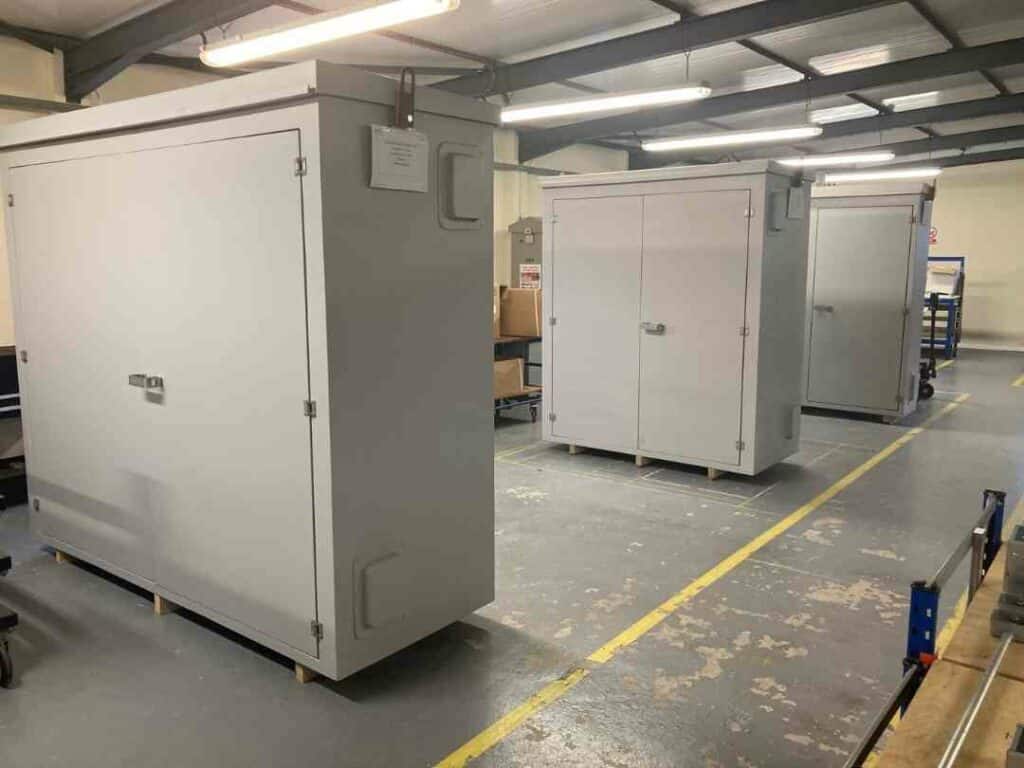What is a DNO?
DNO stands for distribution network operator, but what is a distribution network operator? Your distribution network operator is the energy company which supplies power lines and infrastructure which delivers electricity supply from the National Grid to your property. This may be the National Grid themselves or third party independent distribution network operators. You can easily find out who your DNO is on the National Grid website.
On the railway, the DNO is the energy company supplying electrification and power supplies for stations and other rail infrastructure. There are fourteen licensed geographically defined regions for electricity distribution, based on former electricity board boundaries, these are divided between six company groups.
What is a DNO cubicle?

Whether you know the name or not, you will certainly recognise a DNO cubicle. These inconspicuous metal or glass reinforced plastic (GRP) cabinets are dotted around our streets and our railways to provide power for key infrastructure on the road and railway.
These relatively straightforward and common cubicles actually take a lot, and we mean a LOT, of preparation and planning to make and install. So, what does the life of a DNO involve? Let’s have a look.
The complexity of planning, making and installing a new DNO cubicle

The planning for DNO cubicles
Planning for a new DNO cubicle on the Great British rail network involves communication between and input from a number of parties. From Network Rail on where the DNO cubicle is required, distribution network operators (an energy supplier), a principal contractor and then often at least one bigger contractor between the principle contractor and the small and medium enterprise (SME) building the cubicle.
The design needs to be agreed by all parties and involves completing two designs: Form A in which the concept is outlined and Form B which is a slightly more detailed design, but still a single line electrical diagram. Once the plan is passed to us at RSP we complete the detailed wiring and build designs ready for the final build.
Regulating and making the DNO cubicles
Here at RSP we build high-quality, carefully regulated, durable GRP cubicles and distribution cubicles to provide power for railway trackside signalling, lights and points heating systems.
Our DNO cubicles are built from glass reinforced plastic (GRP), mild or stainless steel, these are designed to ensure the surface spread of flames as well as being able to withstand the British weather. . Our DNO cabinets are supplied in both single-phase 230V and 3 Phase 400V versions, designed for both Class I and Class II networks and manufactured and tested to meet Network Rail Specification NAT/TW/Infralnv/Eng/EP6248683, “Generic Technical Workscope for Design and Installation of New, Renewed and Refurbished DNO Intakes and consumer facilities” and also BS EN 50122-1, “Railway Applications, Fixed Installations 2011”.
The installation of DNO cubicles

Our products are then shipped across Great Britain where their installation has to be carefully managed alongside civil engineers who fit the base that the cubicles sit on.
Sitting on the fence – the boundary issues when installing DNO cubicles
The final issues when installing these DNO cubicles come regarding fencing, boundaries and land ownership, ensuring that the distribution network operator cubicles are looked after (ensuring access and drainage of the area etc.).
Installing these electricity supply points often requires rail and/or road closures and therefore need to be carefully timetabled to help avoid disruption to passengers using the railway.
Our DNO cubicles here at RSP have a minimum 35-year life expectancy. We are entrusted suppliers to the rail infrastructure and have an experienced team on hand to provide ongoing support pre, during and after-sales so do not hesitate to contact our expert team for more information.

